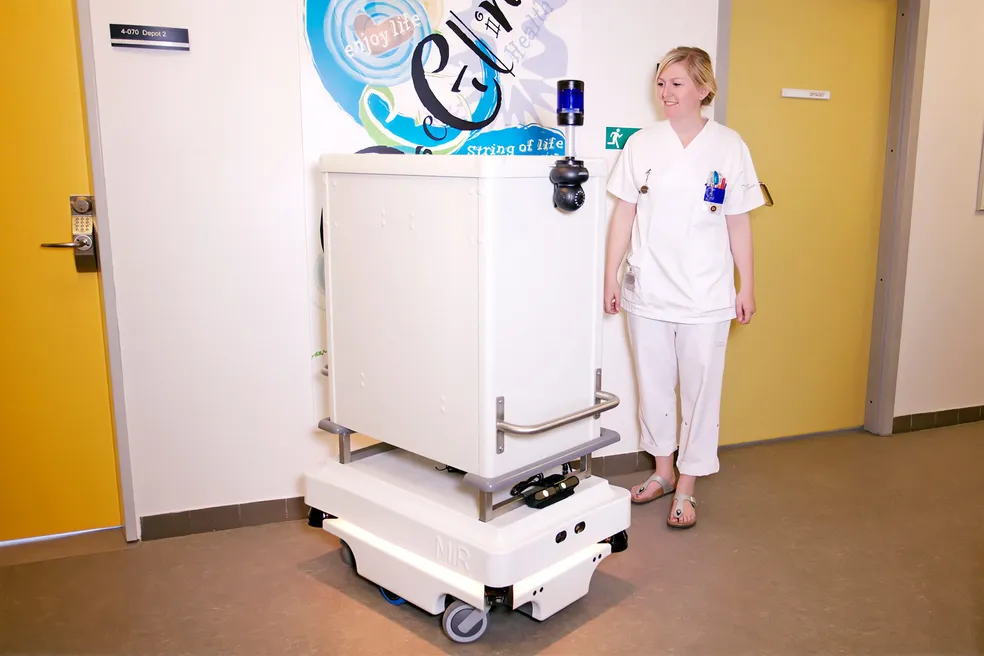The Hospital of Southern Jutland in Denmark
Mobile Robots deliver chemotherapy
The Hospital of Southern Jutland in Denmark uses a fleet of MiR100 robots for transporting blood samples and cancer medicine. The staff sends for the robot with their phones and when the robot arrives they load it and send it off again.
Issue & Solution
The robot then automatically drives to its destination. The robot is summoned; it delivers to the right place and it can even take the elevator, if needed.
The mobile robot MiR100 is used by several Danish hospitals for transportation tasks such as transporting medicine, bed covers, food, mail, garbage etc.
One of the department it works in is the Oncology Department at the Hospital of Southern Jutland; Two years ago, this department had to relocate. From being situated directly above and in direct connection to the laboratory that administers chemotherapies, the department relocated to a new place located two tower blocks away from the laboratory and three stories up. Subsequently, transport needs increased since delivery times for chemotherapies went from 15 seconds to over 10 minutes.
To overcome the increased transportation times, the hospital pharmacy opted to invest in a MiR100 from Mobile Industrial Robots to transport medicine back and forth. As a consequence, the staff today has more time to focus on patient related work, and overall the robot increases the operational efficiency of transportation in the hospital.


The mobile robot MiR100 is used by hospitals for tasks such as transporting medicine, bed covers, food, mail, garbage etc.
The mobile robot, dubbed ‘Ejnar’ by hospital staff, safely navigates through the complicated hospital environment of beds and patient traffic and is even capable of taking the elevator on its own. If it gets stuck, it automatically sends a text to department staff, who can then reroute or remote control it via their smartphone. Once it reaches the department, it calls out for staff to let them know. The medicine is carried in drawers, which are accessed by code to avoid the use of keys.
Chief Robotics Officer, Hospital of Southern Jutland Poul Martin Møller says: “Ejnar has become an integrated part of the hospital environment and it is not uncommon to hear patients yell out “Hi, Ejnar!” at the MiR100 or even talking to it when it passes in the hallways. Financially, the return of investment of our first MiR100 was no more than eight months.
Typically, AGVs in hospitals are used to transport goods through basement corridors, but with the positive ROI and experience of using collaborative mobile robots to distribute medicine directly to patient areas, the Hospital of Southern Jutland expects to expand with more of this type of mobile cobots in the future.
Unlike with the use of traditional AGV’s, the Hospital of Southern Jutland did not have to change the structural design of their buildings, nor did they have to change the location of wires and sensors to accommodate the cobot.. The Hospital of Southern Jutland has also equipped some of their MiR robots with the MiRHook to pull loadable carts as well.

“
Ejnar has become an integrated part of the hospital environment and it is not uncommon to hear patients yell out “Hi, Ejnar!” at the MiR100 or even talking to it when it passes in the hallways. Financially, the return of investment of our first MiR100 was no more than eight months.
